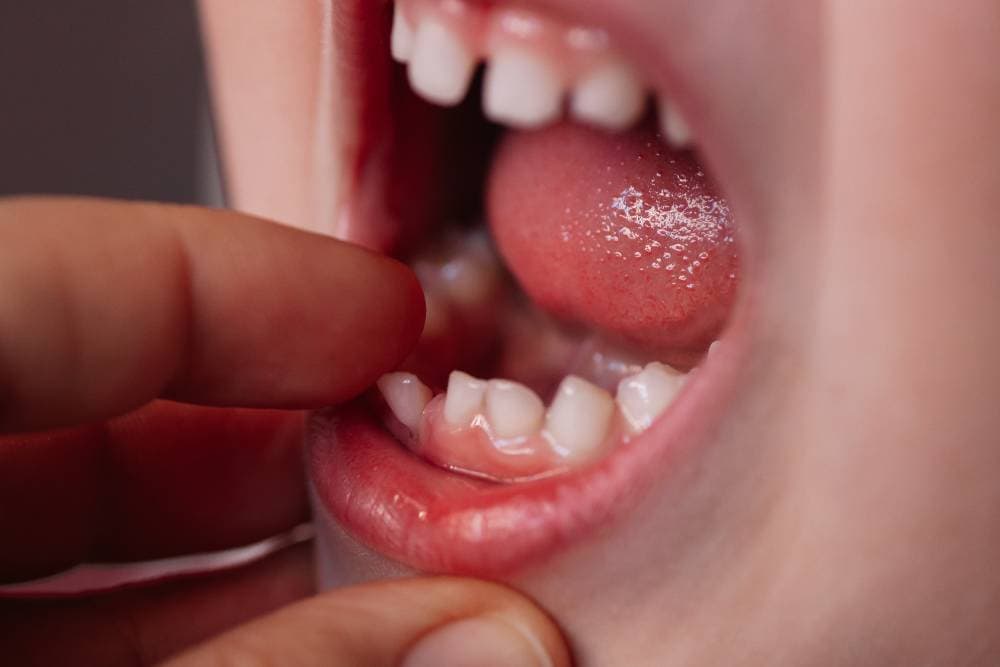Tongue thrust occurs in babies who are bottle-fed or breast-fed. In infants, tongue thrust is totally normal. As the baby grows, their swallowing and speaking patterns change, and ideally they will stop tongue thrusting.
However, sometimes this habit lingers, often due to prolonged use of a bottle or pacifier, allergies accompanied by swollen tonsils, or if the band of tissue beneath the tongue is tight or short. Tongue thrust past infancy can lead to serious orthodontic issues.
Signs of Tongue Thrust in Children
Tongue thrust is apparent in kids when there’s too much forward movement of the tongue when swallowing or speaking. Often, the tongue will tend to push forward in the mouth into the back of the front teeth. There are a number of obvious or more subtle signs of a child having a tongue thrust:
- If the tip of the tongue is visible between the teeth when resting, swallowing or speaking.
- If a child breathes through his or her mouth.
- If the child is unable to close their lips completely.
- If the child has an open bite, which is when the front teeth don’t meet when the teeth are closed.
- If the child is a slow, fast, or unusually messy eater.
- If the child has a speech impediment, specifically if they are lisping ‘s’ or ‘z’ sounds.
Signs of Tongue Thrust in Adults
Although it is rare, tongue thrust can also develop in adults later on in life. This can be due to stress or swollen tonsils from chronic allergies. Tongue thrust can also occur if an adult has a tongue that’s larger than average. Signs of tongue thrust in adults can be similar to those of children. In addition to the earlier mentioned symptoms, an adult may have an elongated facial structure because of being unable to close their mouth or swallow properly. Adults who have tongue thrusts may be unable to bite through certain foods with their front teeth because of the gap in their front teeth.
How Tongue Thrust Can Affect Your Teeth
When the tongue pushes against the back of the teeth, the pressure can make your front teeth move outward, resulting in a gap or open bite. If tongue thrust is left untreated it can interfere with orthodontic treatment. If the tongue continues to push against the teeth, it can be difficult for the orthodontic appliances to properly work to set teeth straight.
How is Tongue Thrust Treated?
While it’s easier to treat earlier on in children using a “tongue crib,” which keeps the tongue from pushing against the teeth, treatment can look similar for kids and adults. If a tongue thrust is caused by allergies, the easiest treatment is to address the allergies first. For other forms of treatment, your orthodontist or dentist may suggest orofacial myology. This is a type of therapy that corrects the placement of the lips, jaw, and tongue through exercise and working with a therapist.
Tongue thrust can also be treated with different orthodontic appliances such as retainers. Talk to your orthodontist to help you find the best solution for your tongue thrust.






